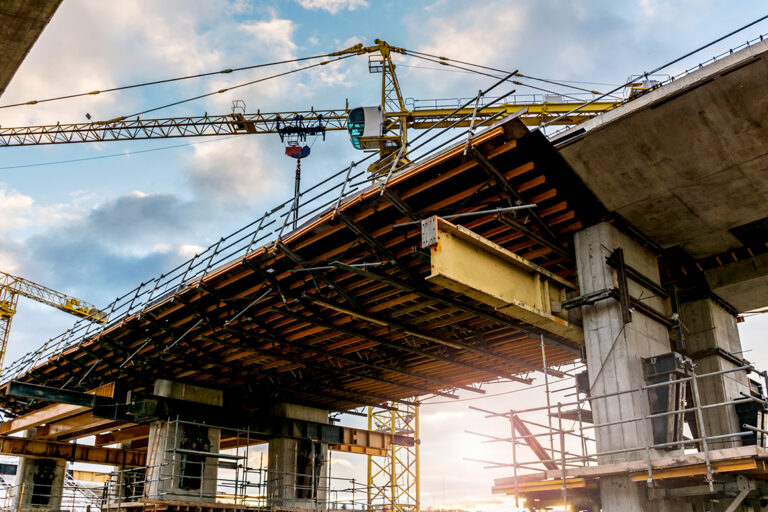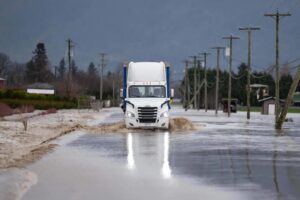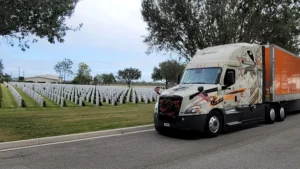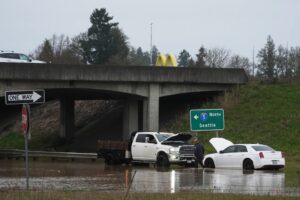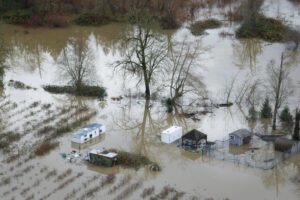JEFFERSON CITY, Mo. — Last week President Donald Trump outlined a new $1 trillion plan for spending on roads, rails, water systems and other infrastructure, proposing to rely fully on federal spending. This change from a plan he proposed as a presidential candidate in 2016, which relied on tax incentives to spur private investments in such projects, drew praise from some state transportation officials and industry groups.
Since outlining his budget proposal last week, Trump has done little to promote the new infrastructure plan. A politically divided Congress has no obligation to consider it. In fact, Trump’s prior infrastructure proposals all stalled, even when Republicans controlled both the House and Senate.
“The Republican House version of the bill won’t be a trillion dollars, I can tell you that right now,” said U.S. Rep. Sam Graves (R-Mo.), the ranking GOP member of the House Transportation and Infrastructure Committee. “It will be a lot farther south than that.”
The retooled plan relies on existing fuel-tax revenue to cover much of the cost. White House budget documents show that Trump’s plan lacks revenue sources for almost half the $1 trillion amount — about $450 billion proposed for roads and bridges, public transit, rails, ports, pipelines, dams, drinking water and sewer systems, and electrical and high-speed internet networks.
The proposal is “a fantastic development” that “would be a great shot in the arm for infrastructure improvements in this country,” said Dean Franks, head lobbyist for the American Road and Transportation Builders Association. “How to pay for it is always the big question,” he added.
For Trump, a $1 trillion target has remained a focal point of his infrastructure plan, even as the way to pay for it has evolved.
The goal traces back to one-upmanship of former Democratic presidential candidate Hillary Clinton, who in 2016 proposed spending and loans that she projected would generate about $500 billion for infrastructure. Asked for details about his own plan in August 2016, Trump told Fox Business: “I would say at least double her numbers.” When pressed on how he would pay for it, Trump replied, “We would do infrastructure bonds.”
During an October 2016 speech in Gettysburg, Pennsylvania, Trump provided new details and included infrastructure in his “100-day action plan to make American great again.” He said he would leverage “public-private partnerships and private investments through tax incentives to spur $1 trillion in infrastructure investment over the next 10 years.”
As president, Trump’s first two budget proposals included $200 billion in new federal funding for infrastructure that he said would generate at least $1 trillion in projects when matched with money from state and local governments or private investors. But those plans never passed a Republican-led Congress.
Some state transportation officials raised concerns, noting that Trump’s plan would have flipped the traditional model wherein the federal government covers the majority of costs for highways, bridges and public-transit projects.
“There was much criticism of this administration when they kept promising a $1 trillion infrastructure plan, and the budget came out, and there was only $200 billion in actual federal money,” said Jeff Davis, senior fellow at the nonprofit Eno Center for Transportation in Washington, D.C. “This year, it’s actually $1 trillion in honest-to-God spending by the U. S. Treasury Department.”
Trump’s new plan takes a more traditional Washington approach. He proposes $810 billion through a 10-year reauthorization of the surface transportation program, which provides funding for roads, bridges, rails, public-transit and transportation-safety programs and is set to expire at the end of September.
He adds $190 billion in one-time grants, including $60 billion for “mega-projects” that could include everything from roads to dams to high-speed internet networks. Other grants would be devoted to freight systems, bridges, public transit and rural projects.
U.S. Rep. Peter DeFazio (D-Ore.), who chairs the House Transportation and Infrastructure Committee, said he is encouraged that Trump’s budget “signals he is interested in at least talking about the need to invest in our nation’s crumbling infrastructure,” but he also said it is hard to say whether Trump “actually wants to move forward with innovative solutions that would tackle carbon pollution in the transportation sector.”
One way to fund Trump’s latest plan would be to raise the federal fuel tax, which has remained unchanged since 1993. This idea has gained little traction in Congress, even though the increase has support from the U.S. Chamber of Commerce and AFL-CIO, two high-profile allies of both parties.
Trump’s proposal includes no tax increase. The White House Office of Management and Budget said the administration would work with Congress to cover a $261 billion gap between highway-trust-fund revenue and proposed spending.
The Associated Press is an independent global news organization dedicated to factual reporting. Founded in 1846, AP today remains the most trusted source of fast, accurate, unbiased news in all formats and the essential provider of the technology and services vital to the news business. The Trucker Media Group is subscriber of The Associated Press has been granted the license to use this content on TheTrucker.com and The Trucker newspaper in accordance with its Content License Agreement with The Associated Press.








